Please help us sort the stacks in ascending order ! i.e. left facet seems to be in order but right side is not really sorted because 1.7 should have come at the right end. (please refer screenshot)
similar but not exact queries How to control ordering of stacked bar chart using identity on ggplot2 Order Stacked Bar Graph in ggplot reorder each facet ascending for a ggplot stacked bar graph
df = data.frame(cat = c(rep("A",9),rep("B",11)),
grp = c(rep("C",3),rep("D",3),rep("F",3), rep("C",3),rep("D",3),rep("E",2),rep("F",3)),
yrs = c(rep(c("2017","2018","2019"),5),"2017","2019","2017","2018","2019"),
per = c(2.4,2.5,3.2,
15.3,17,16.7,
82.4,80.5,80.1,
8.6,9.6,15.2,
36.2,42.2,40.4,
1.7,1.1,53.4,
48.2,43.4))
df %>%
ggplot(aes(x = "scale",y = per, fill = grp)) +
# geom_bar(stat="identity") +
geom_col() +
geom_text(aes(label= round(per,1)),
position=position_stack(vjust=0.5), size= 3) +
facet_grid(vars(yrs),vars(cat)) +
coord_flip() +
theme_bw() +
xlab("") +
ylab("") +
ggtitle("How to sort ") +
theme(legend.position="bottom",
legend.title = element_blank(),
plot.title = element_text(hjust = 0.5),
axis.text = element_blank(),
axis.ticks = element_blank())

